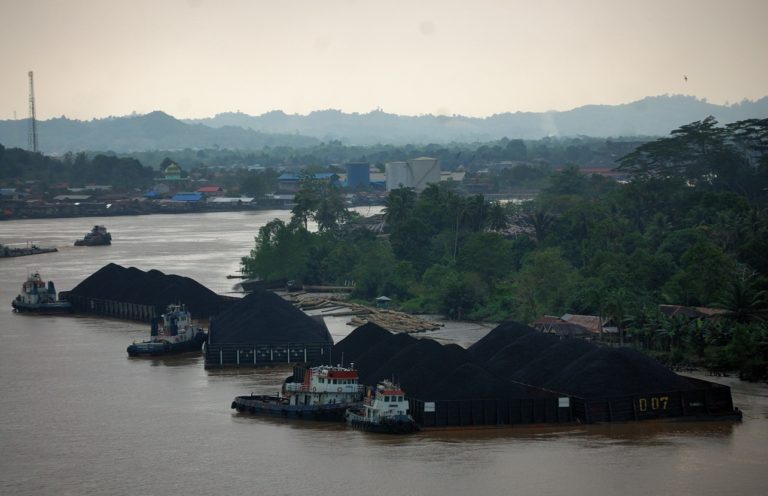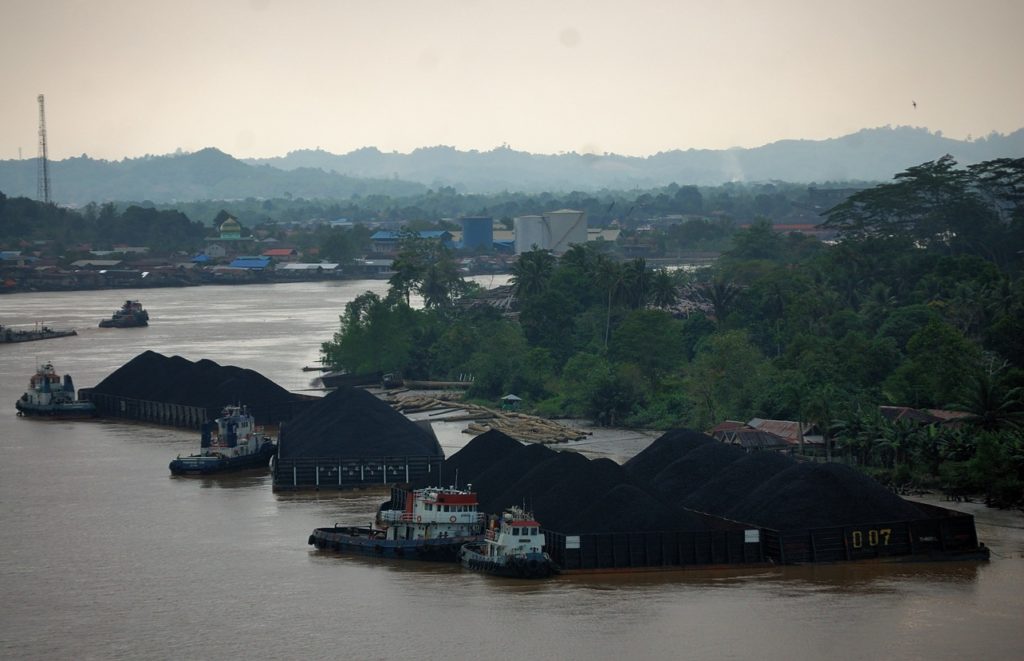
Samarinda is the capital city of the East Kalimantan Province of Indonesia, on the island of Borneo. The city has a rich cultural heritage, warm generous people, but its wide, productive floodplain, which is a treasure of biodiversity, also carries blue green scars that are the result of almost two decades of coal mining. Lost forests, increased floods and poisoned rivers are the least of the damage being done.
More than a decade and a half of growth in Indonesia’s coal-mining sector has positioned the country as the world’s fourth-largest coal producer and the largest exporter of thermal coal. Indonesia now accounts for 7.2 percent of global coal production and so plays a major role in global greenhouse gas emissions from coal-fired power plants.
Almost 30 percent of Indonesia’s total coal reserves are found in East Kalimantan. With more than 50 percent of its land area allocated for mining, East Kalimantan supplies around 70 percent of Indonesia’s coal production. Coal mining is most pronounced in and around the capital city of Samarinda, where 58 open cast coal mines operate. Such a number of mines causes significant environmental harm as well as severe health impacts as pits butt up against villages and cut into community land essential for food production.
But Samarinda has reaped a grim legacy for its role as Indonesia’s coal capital. The expansion in coal mining has not seen a proportional increase in the government resources allocated to manage the industry. It has been reported that Samarinda has only five government mining inspectors responsible for ensuring compliance by mine companies to regulatory obligations. Illegal mining is rife and little or no consideration or planning has preceded the rush to mine. “Poor governance, control of resources by powerful elites, a permit process that doesn’t adequately consider the environmental or social impacts of mining, and a lack of monitoring, oversight, and clear requirements for post-mining clean-up has allowed coal mining to operate largely unchecked with a high environmental, social, and economic cost to local communities,” wrote one journalist who visited the area recently.

In addition to the pollution of available freshwater with heavy metal from mine spoils, coal miners denude hillsides, causing rapid runoff of the region’s torrential downpours, leading to mudslides that now routinely decimate rice fields and wash out neighborhoods. Consequently, coal mining in Indonesia has resulted in an increase in the number and severity of floods. The city of Samarinda was flooded 150 times between 2009 and 2014. The conservation group WWF estimated the total cost of these floods at US$9 million. Indeed, US$7 million has already been spent to deal with the flooding and local government has drawn up a US$350 million flood mitigation plan. WWF reports that increased flooding caused by coal mining is the likely cause of the dramatic sedimentation in three lakes in the local Mahakam River Basin, an outstanding natural floodplain and biodiversity treasure that is home to 147 indigenous species of freshwater fish. WWF reports that; “Thirty years ago, these lakes were 15 m deep and clear; today, they are only 2m in depth and their water is murky.”
And now, the recent downturn in coal’s fortunes brought about by China’s reduced demand, has hit the meager benefits from coal mining in the city, with many of the coal companies that once operated in Samarinda now insolvent or divested of assets with little recourse for governments to demand rehabilitation obligations be fulfilled. The city’s revenue from mining was reportedly only 6.3 percent of GDP, with coal mining employing less than 7 percent of the population, leaving Samarinda with one of the highest unemployment rates in East Kalimantan. Despite producing about half of Indonesia’s domestic thermal coal, the city doesn’t have a coal-fired power station and relies on aging diesel-powered facilities for electricity. Almost 40 percent of Samarinda households are without electricity and those lucky enough to have it connected commonly experience blackouts. Between July and November 2008, blackouts were experienced between 6 and 10 hours a day. (1)
At least 70 abandoned coal mine sites now scar the countryside. The growing number of abandoned coal pits, with their piles of mine spoil, leave the landscape prone to flooding and contamination of waterways with toxic cocktails of heavy metals and sediment. (2)
The local population suffers ongoing loss of groundwater and community and household wells are dry. Operating open-cut coal mines drain water tables to access the coal and use large amounts of water in the mining process, but unless mining companies comply with environmental obligations to rehabilitate the mine sites and backfill mine pits with mine spoil and overburden, pits fill with groundwater and runoff and continue the loss of community water through evaporation. As groundwater is essential for the area’s diminishing rice crop, many local farmers are forced to rely on the mine pits themselves for water to irrigate crops such as rice that has traditionally been grown using groundwater. Local farmers are now forced to grow less sensitive crops, such as chilies, that can cope with being irrigated by toxic mine water.
But the people are suffering much worse effects from the abandoned mine pits: they are death traps for local children.
In the last five years, 24 people, mostly children, have drowned in the deep aqua-coloured water of the coal pits – a legacy of the high heavy metal concentrations. Three drownings coincided with a visit to Samarinda by Indonesian President Joko “Jokowi” Widodo in November 2015 and again in March this year. The timing of the deaths may have prompted local police to make a statement that after a five year delay in investigating mine deaths, charges would be laid against mine operators under Article 359 of the Criminal Code for negligence leading to loss of life, which carries a maximum prison sentence of more than five years. The police concluded, “We will prove that the mine operators were negligent in restoring their former concession areas and caused the deaths of a number of people, including children.” Waterkeeper partner, JATAM, a tireless mine advocacy network, has successfully lobbied the East Kalimantan Government to hold a Parliamentary Inquiry into the deaths.
Waterkeeper is standing with JATAM and the communities of Samarinda in their fight for justice and an end to the tragic human toll and environmental vandalism caused by the coal mining industry in Indonesia. The fight to reclaim the city and put an end to the death pits of Samarinda is far from over, and we will help its people fight for justice, and keep their children safe.
Citations
(1) JATAM East Kalimantan: Hasil Analisis Kompilasi Jadwal Pemadaman Listrik Wilayah Kaltim dan Samarinda bulan Juli-November 2008 dari PLN Kaltim [Results of Analysis of Compilation of Eletricity Blackout Schedules in the East Kalimantan and Samarinda areas, from July to November 2008 from State Electricity Company (PLN) in East Kalimantan], Sep 2009.
(2) Komnas HAM, 2015. (Republic of Indonesia’s National Commission For Human Rights (Komnas HAM). Komnas HAM’s recommendation on cases of children drowning in Samarinda’s abandoned mine pits.